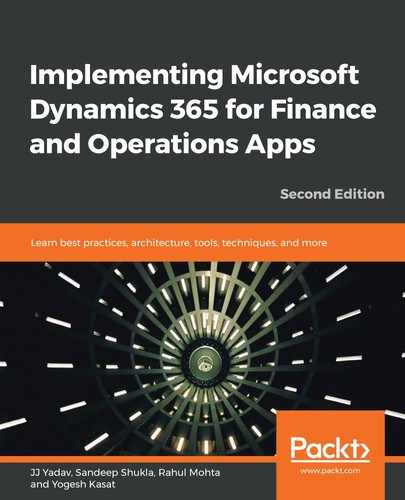ER is a tool that's used to configure electronic document formats in accordance with the legal requirements of various countries/regions. This engine supports statutory/country-specific electronic documents, enabling you to manage these formats during their life cycle.
ER has the following salient features:
- It is a good tool for producing Excel, CSV, TXT, XML, and Open XML worksheet formats.
- It is designed for business users familiar with Excel-based formulas.
- It easily adheres to changes in regulatory requirements.
- Versioning is available to manage the definition life cycle.
Other applications of electronic reporting include the following:
- Financial auditing
- Tax reporting/GST/VAT
- Electronic invoicing
The following is a summarized list of ER configurations that are available in Microsoft Dynamics 365 for Finance and Operations:
- Government compliance: XBRL reporting and others
- Tax authorities: Tax reporting, revenue/turnover, and more
- Banks: Payments, receipts, trade reporting, and more
- Localization through Global Tax Engine (GTE): Delivered via a taxable document model, which is a key input to the tax engine and leverages various taxable document types and tax documents
In summary, the ER tool solved many country-specific incoming and outgoing electronic documents needs out of the box. As the regulations change, Microsoft delivers updated configuration through Lifecycle Services (LCS), which can be downloaded in the Finance and Operations application and used. Customers and partners can extend the existing configuration and build new configurations to support customer/project unique requirements. ER reporting is configuration-based, which makes it super easy for the power user or business analyst to create new configurations without any code development. The configuration that's created by customers and partners can be uploaded to the LCS asset library and can be used in Finance and Operations applications.
Next, let's look at operational reporting business and commercial documents. Business documents are the most critical reports for any ERP implementation projects as these go out to external parties.
